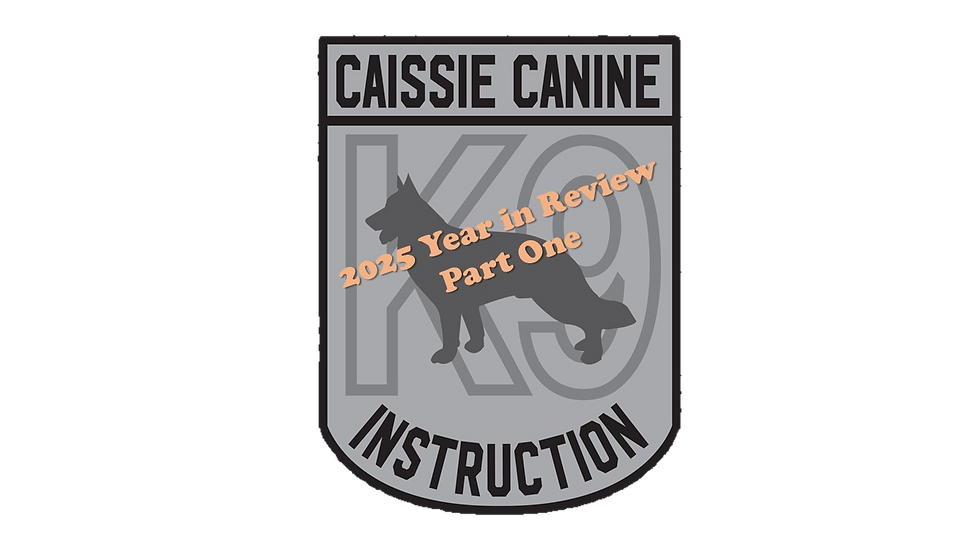Caissie Canine Instruction: First Aid for my Dog
- caissiecanineinstr

- May 3, 2021
- 2 min read

Welcome to Doggie Dialogue:
We begin our blog with a “BEAUTIFUL TAIL”. This is Tessa, a Belgian Malinois from Czechoslovakia, part of the CDN Canine Detection Program. Tessa is a confident, hardworking, high-drive, and well-tempered canine.

And to add to that stellar resume, now a new mama!!

Let’s Talk first aid for canines:
There are canine first aid accredited courses available in Canada and first aid kits available for all pets. If your dog is injured, the first call is ALWAYS to your vet for guidance and instruction. If the injury is serious or life threatening and your vet is not available, please contact your local veterinary emergency center or alternatively, a 24-hour vet hospital. Please direct message us for this information, if needed.
For minor wounds, such as cuts or a graze, we recommend to flush out the wound 2-3 times daily with warm salt water. DO NOT use anything else until speaking to your vet. All wounds should be monitored for signs of infection. Signs of infection may include:
1. Swelling
2. Discharge
3. Itching
4. Or redness.
If your dog’s wound is deep, bleeding heavily, or something is inside the wound (like a piece of glass) contact your vet as soon as possible!

When your dog is home from the vet’s after being taken care of, prevent your dog from causing further damage to their wound, by using a dog cone or body suit until the wound starts to heal.
If the wound is not healing after a few days, further treatment or antibiotics may be needed.

Some dogs may sprain or strain a muscle when playing, and most vets will recommend rest, ice pack, or heating pad. A nonsteroidal anti-inflammatory (NSAID’S) to ease inflammation may be prescribed by your veterinarian. DO NOT give your dog any over-the-counter pain medication(s) or any other human medication(s) as these can be fatal for your dog.
When you and your dog/dogs are out running errands, travelling to the cottage, or relaxing at home, emergencies can happen. It is always a great idea to have a dog first-aid kit available.
When considering assembling your first-aid kit for your dog, remember to include the following:
1. A copy of your dogs’ vaccination
2. Medical records
3. Emergency phone numbers
In your first-aid kit a light weight latex-free gauze and water-repellent bandages are a great start. In addition to your kit, a small pair of scissors and tweezers can be helpful.
Lastly, when travelling, you can consider bringing a blanket in the car for both you and your dog, and a couple bottles of water.
May you have many safe and happy adventures!




Comments